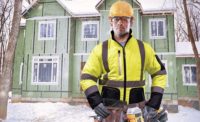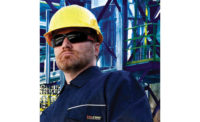For eyewear, as for the luxury market in general, there has been a major generational change in the consumer base with the arrival of millennials,” reports Bain & Company, one of the world's leading management consulting firms
Bain works with change-oriented executives to help them make better decisions. The consultancy says “millennials accounted for 85 percent of the luxury market’s growth last year and that glasses and sunglasses seem to be trending with them as a hot accessory to compliment personal style.”
Since eyewear is a hot accessory trend among millennials, and since they are now the biggest generation in the workforce, safety professionals need to consider the millennial generation when specifying safety eyewear. Safety managers should also consider how to connect with the millennial workforce via digital platforms, especially where safety training and motivation are concerned.
The facts
NIOSH says more than 2,000 U.S. workers suffer from an eye injury at work every day. Ten to twenty percent of these injuries will cause temporary or permanent vision loss.
That’s a hard statistic to swallow, especially when you consider the needless suffering of more than 700,000 American workers and the associated medical costs each year -- estimated to be more than $400 million.
Why are eye injuries so prevalent when experts report that 90 percent of them can be avoided by using the proper safety eyewear?
Non-compliance often happens because:
- Employees are wearing improper eye protection or not wearing it at the appropriate times
- Employees don’t know or understand the eye safety dangers lurking in their work space
- Basic safety glasses are more likely to be removed or not worn at all because of comfort or style issues
- Safety eyewear with optical clarity, comfort features, fun colors, and a sporty look are often missing from many safety programs
Match eyewear to hazards
OSHA states that any worker or bystander who is working in, near, or passing through vision risk areas should wear protective eyewear. The type of eyewear depends on the specific hazards in the workplace.
If the jobsite has flying objects, particles, or dust, safety glasses with side protection (side shields) must be worn, according to OSHA.
Employees who work with or near chemicals, should wear goggles with indirect vents.
If hazardous radiation is a risk from lasers, fiber optics, or welding, workers must wear special-purpose safety glasses, goggles, face shields, or helmets designed for those tasks.
If fogged eyewear — the number one eyewear complaint — is an issue, then the safety glass, face shield, or goggle should have a dependable anti-fog coating that doesn’t easily rub off. When tasks are conducted with fog-obscured vision, millennials risk both eye injury and bodily harm.
Keep in mind, tech-savvy millennials have had information at their fingertips since they were young. Do not assume they will wear eyewear simply because it is provided. Instead, convince and encourage them to wear safety glasses by sharing links about injury statistics or key findings from hazard assessments. Sharing stories about actual eye injury incidents, whether at your workplace or somewhere else, can also be an effective tool.
Boosting compliance
After you have identified work activities or environments that put your employees’ (and visitors’) eyes at risk, make sure risks are understood. Training, meetings, toolbox talks, free webinars, and infographics are resources to boost employees’ knowledge and understanding. PPE manufacturers often provide free white papers or “Fast Facts” that can be used in training. These are often available as a free download from the manufacturer’s website.
To ensure employees are wearing the right protection, post signs in high-risk areas, include a safety walking tour during training or meetings, or video the high-risk areas and send to workers in an email.
If millennials make up a good portion of your workforce, you may want to consider setting up a private YouTube Safety Channel for your company. Since millennials respond favorably to videos, a private YouTube safety channel can be an effective and entertaining way to boost compliance and increase safety awareness.
Other social media tools that encourage worker participation in safety conversations include surveys, polls, and Facebook contests. You may want to consider a Facebook and Instagram Selfie Safety Photo Contest where a weekly winner is chosen from the posts. June, which is the NSC’s National Safety Month, is a great time to run such a contest.
Once risks are understood, organizations should always consider ways to eliminate or modify unacceptable vision risks through engineering or administrative controls. When these types of control are not practical, PPE plays a paramount role in preventing eye injuries.
Types of vision protection
There are many types of vision protection, all of which play a prominent role in preventing injury and vision impairment.
Let’s take a closer look at the dynamics behind safety eyewear. It is a primary PPE segment, plus people have a self-expressive connection with eyewear, especially premium eyewear.
ANSI Z87.1 safety eyewear is available with:
- Anti-fog coatings that are either water-based or solvent-based to prevent fogged glasses
- Anti-scratch and anti-abrasion coatings
- De-centered lenses for enhanced optimal clarity
- Polarized lenses to reduce glare
- HD Technology for optical clarity
- UV protection to protect against the sun’s harmful rays
- A variety of tints to reduce glare or hazardous screen radiation
- Filter lenses with a shade number for protection from radiant energy
- RX and bi-focal
- Over-the-Glass (OTG) to use with prescription eyewear
- Removable EVA foam liners for additional protection against dust and debris
The variety of coatings and technology available make it easy for safety managers to specify eyewear that matches the risks and hazards at their jobsite. While protection remains the primary goal of any safety program, it’s important for safety managers to consider comfort and style.
As workplace demographics change, safety eyewear is morphing from basic styles to premium sport and fashion styles. Preferences for safety glasses have evolved from basic styles to sport-inspired eyewear that can be worn after work. Comfort and style are leading the way.
Comfort
End-users are often required to wear their eyewear for extended periods of time, so comfort is a critical issue and has a direct correlation with compliance. When a safety glass is comfortable to wear, the more willing the employee is to wear it on a regular basis, which improves compliance and reduces injuries.
Look for styles with rubber nose pieces and rubber temples that provide a secure and comfortable fit all day long. Also, don’t forget the eyewear styles that cater to smaller head shapes, which are often good choices for female workers. A good fit encourages long-term wear.
Style/fashion
Safety eyewear that feels good and looks good is a trend that is here to stay, especially since millennials will occupy 75 percent of the workforce by 2025, according to a Pew Research Center study.
“Savvy manufacturers are listening to millennials’ comfort and style demands and are offering more premium safety eyewear with colorful lenses and cool-shaped frames,” says eyewear product developer Cindy Bullion,
“Premium safety eyewear looks as good as popular sport or recreational styles, and market indicators suggest that millennials are driving the resurgence of classic eyewear like aviator and wayfarer style frames,” says eyewear product manager Tim Wiener.
Numerous colorful lens choices exist today for ANSI Z87.1 certified eyewear, including blue, silver, gold, fire, emerald, and red mirror lenses. Frames are evolving too. Black and silver frames are always in style but crystal brown, burnt orange, pearl white, camo, and vivid lime green and blue frames deserve a shout-out.
New dynamics
As workplace demographics continue to shift, workplace safety will have to shift as well. Millennials will have a profound effect on all aspects of work, including safety. Safety professionals will need to embrace the new dynamics at play. One of the best ways to motivate and inspire millennials is to create a positive safety culture that balances the needs of the organization, the workforce, and the community. And don’t forget. A cool pair of “feel good, look good” safety glasses can reduce your eye injury statistics while providing millennials with a perk they will appreciate.



